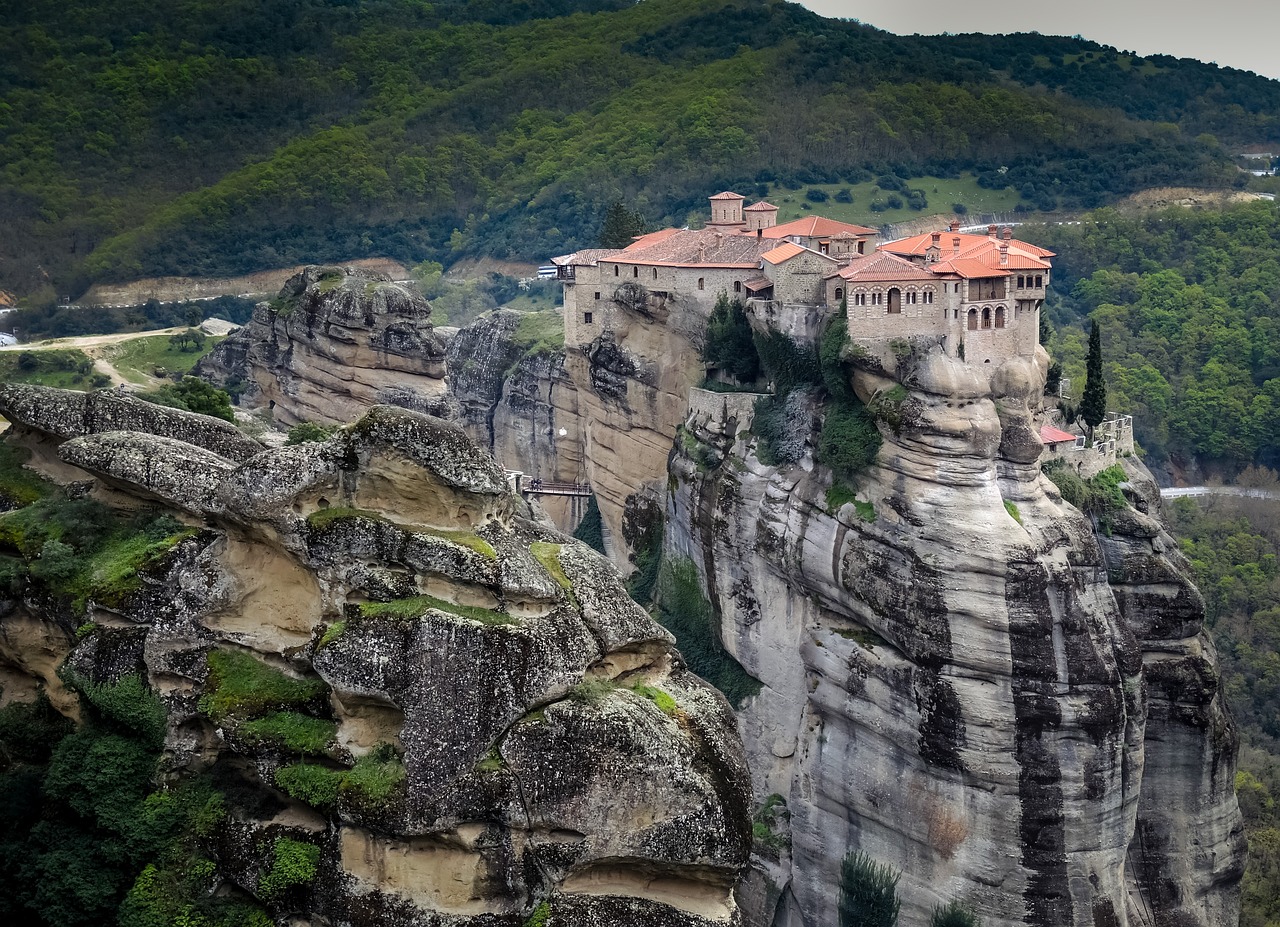
- On Nov. 28, 2023
- In
Meteora
Meteora is a stunning rock formation in central Greece, near the town of Kalambaka. The name "Meteora" means "suspended in the air," and it aptly describes the complex of monasteries perched on top of towering rock pillars. Here are some key aspects about Meteora:
-
Geological Formation:
- Meteora is a unique geological formation consisting of enormous sandstone rock pillars, rising steeply from the ground. These rocks were formed millions of years ago.
-
Monasteries:
- The Meteora monasteries are a UNESCO World Heritage site and a remarkable example of the monastic tradition. Originally, there were 24 monasteries built atop the rocks, but today only six are active and open to the public.
-
History:
- The first monasteries in Meteora were likely built in the 14th century by monks seeking refuge from political turmoil. Access to the monasteries was initially difficult, requiring rope ladders and baskets, but stairs and bridges were later constructed.
-
Religious Significance:
- Meteora has been a place of spiritual significance for centuries. The monasteries served as centers of learning and preserved religious texts and artworks.
-
Architectural Marvel:
- The monasteries are known for their unique construction, with buildings often clinging to the edges of cliffs. The structures incorporate natural rock formations, and some are adorned with frescoes and religious artwork.
-
Monastery Names:
- The six active monasteries in Meteora are Holy Monastery of Great Meteoron, Varlaam Monastery, Roussanou Monastery, St. Stephen's Monastery, Holy Trinity Monastery, and St. Nicholas Anapafsas Monastery.
-
Access:
- Visitors can access the monasteries by climbing stairs carved into the rocks or using modern bridges. Proper attire, often including modest clothing and covered shoulders, is required for entry.
-
Views and Scenery:
- The panoramic views from Meteora are breathtaking, offering a landscape of rocky spires, lush valleys, and distant mountains.
-
Hiking Trails:
- Hiking trails connect some of the monasteries, providing an opportunity for visitors to explore the natural beauty of the area.
-
Tourism:
- Meteora has become a popular tourist destination, attracting visitors from around the world who are drawn to the combination of religious history, architecture, and natural beauty.
-
Sunset and Sunrise Views:
- Sunset and sunrise are particularly magical times to visit Meteora, as the changing light casts a warm glow on the rock formations and monasteries.
-
Cultural and Photography Tours:
- Various guided tours are available, offering insights into the history, culture, and significance of Meteora. Photography enthusiasts often find the landscape to be a captivating subject.
Meteora is a place of both natural wonder and spiritual significance, and its monasteries perched on high cliffs create a truly unique and awe-inspiring destination.
Other things you can do:
- Meteora Monasteries Shore Excursions
- Day Trip to Meteora from Thessaloniki/Athens
- Meteora Guided Tours
- Visit Meteora Monasteries
- Thessaloniki to Meteora Bus Tour
- Athens to Meteora Day Excursion
- Private Transfer to Meteora
- Meteora UNESCO World Heritage Site
- Guided Visit to Holy Monastery of Great Meteoron
- Varlaam Monastery Tour
- Roussanou Monastery Exploration
- St. Stephen's Monastery Day Trip
- Holy Trinity Monastery Excursion
- St. Nicholas Anapafsas Monastery Shore Excursion
- Meteora Scenic Views Tour
- Hiking in Meteora
- Photography Tour of Meteora
- Cultural Insights into Meteora Monastic Life
- Sunset/Sunrise Meteora Visit